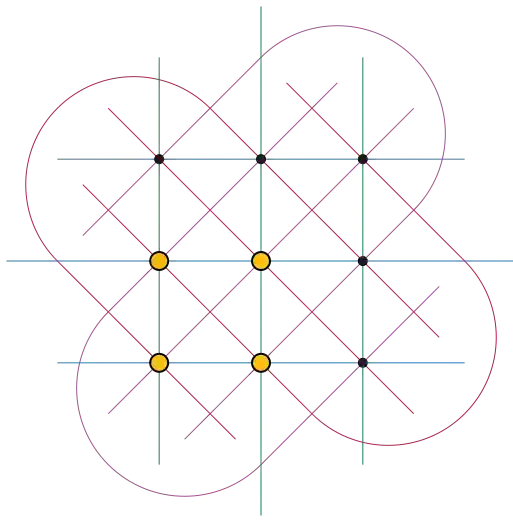Table of Contents
A new AI tool developed by Google’s DeepMind has reportedly cracked a notoriously hard math problem that human mathematicians could not solve. The researchers say this is the first time that AI has made a novel scientific discovery without any prior knowledge.
What is the cap set problem?
The cap set problem is a puzzle that involves finding the largest possible set of points in a multidimensional space, such that no three of them are collinear. In other words, no matter how many points you add, you can never form a straight line with any three of them.

The cap set problem is related to a branch of mathematics called combinatorics, which studies how to count and arrange discrete objects. It has applications in cryptography, coding theory, and computer science.
The cap set problem is also known as the Erdős-Szemerédi sunflower conjecture, named after two famous mathematicians who posed it in 1972. Despite its simple formulation, the problem has remained unsolved for decades and has been considered one of the most difficult open problems in combinatorics.
How did the AI solve it?
The AI tool that solved the cap set problem is called FunSearch, and it is based on DeepMind’s AlphaZero, a powerful AI system that can master complex games like chess and Go by playing against itself. FunSearch treats math problems as games and tries to find the best moves to win.
FunSearch uses a large language model (LLM) called Codey, which is trained on millions of lines of computer code. Codey can generate and evaluate mathematical functions, and reject the ones that are incorrect or redundant. FunSearch uses Codey to explore the space of possible solutions and to verify the correctness and novelty of its findings.
The researchers say that FunSearch took a few days to find a new solution to the cap set problem, which was not in its training data and was unknown to human experts. The solution is a new upper bound on the size of the cap set, which means that there cannot be a larger set of points that satisfies the problem’s condition.
Why is this a big deal?

The researchers claim that this is the first time that AI has made a genuine, new scientific discovery that was not part of its training data. This is remarkable, considering that AI is often criticized for generating nonsense and fake content, even when it has access to the correct information.
The researchers also admit that they do not fully understand how FunSearch works, and what makes it capable of finding new solutions. They say that there is something mysterious about the way that the LLM thinks for itself and that they have only hypotheses, but no definitive answers.
The researchers hope that their work will inspire more research on how AI can contribute to scientific discovery, and how to explain and interpret its results. They also believe that FunSearch can be applied to other open cap set problems in mathematics and beyond.
“When we started the project there was no indication that it would produce something genuinely new,” DeepMind research VP Pushmeet Kohli told The Guardian. “As far as we know, this is the first time that a genuine, new scientific discovery has been made by a large language model.”
Can AI replace human mathematicians?
AI has made impressive progress in solving some mathematical cap set problems, such as the cap set problem that you asked me to rewrite the news article about. However, AI cannot replace human mathematicians completely, for several reasons.
- First, AI is still limited by the data and algorithms that it is trained on. It cannot invent new concepts or methods that are not already implicit in its training data. Human mathematicians, on the other hand, can use their intuition, creativity, and imagination to explore new areas of mathematics that AI may not be able to access.
- Second, AI is not very good at explaining or understanding its solutions. It can generate and verify mathematical functions, but it cannot provide the underlying logic or intuition behind them. Human mathematicians, on the other hand, can communicate and justify their ideas, and build on the insights of others.
- Third, AI is not very flexible or adaptable to different contexts and domains. It can only solve the problems that it is designed for, and it may fail or produce nonsense when faced with unexpected or ambiguous situations. Human mathematicians, on the other hand, can apply their knowledge and skills to various fields and disciplines, and cope with uncertainty and complexity.
Therefore, AI may not replace human mathematicians but rather complement them. AI can help human mathematicians by performing tedious calculations, finding new solutions, and suggesting new directions. Human mathematicians can help AI by providing feedback, interpretation, and generalization. Together, they can advance the frontiers of mathematics and science.